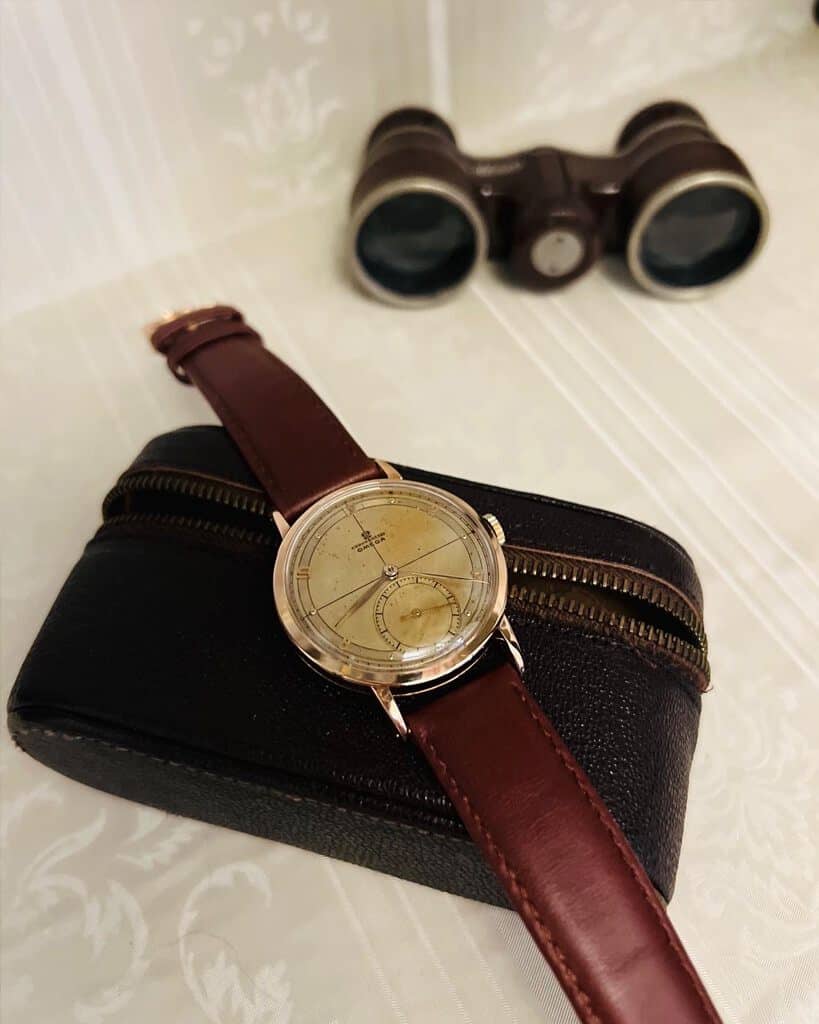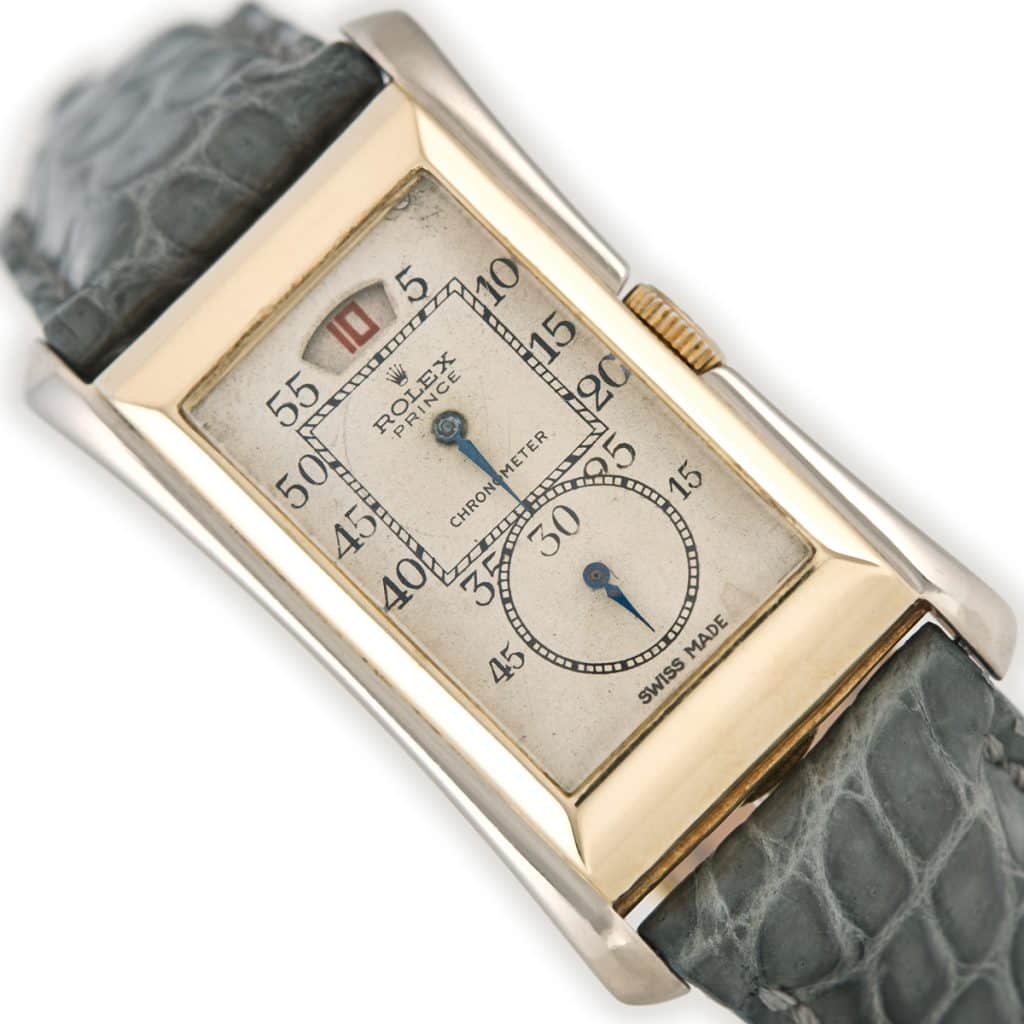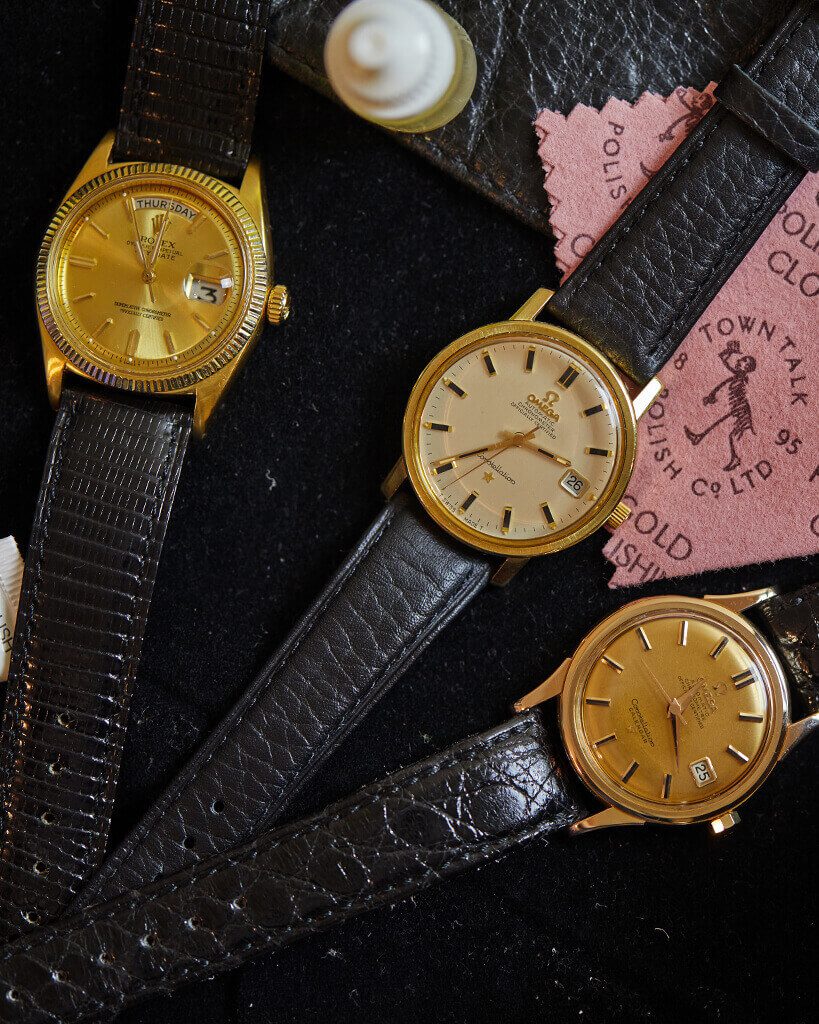By Alan Wood
Collecting vintage watches is thrilling, addictive and hugely satisfying. But where to start?

Alan Wood is a trusted vintage watch dealer with over 35 years of private collecting experience. After founding Vintage Gold Watches in 2011, his deep knowledge and infectious passion for mechanical timepieces earned him a highly respected reputation in the industry. Vintage Gold Watches has become a renowned dealer thanks to Alan’s expertise and skilled team of restorers. Alan’s love for vintage watches started as a young Mechanical Entrepreneur and grew into an obsession. He believes the finest watches were made in the 1950s, 60s, and 70s, and is thrilled to share them with others.
It’s a journey, enjoy it. A love of vintage watches and all that comes with it cannot be boiled down into a ‘how to’ guide. There’s no apprenticeship, no certification to be gained, there’s no end goal or ego-boosting recognition when you reach a certain level of knowledge. In a nutshell, there is no competition. You do it because you love it. So enjoy the winding road of discovery and the knowledge acquisition that comes with it.
Research, research, research. You can’t really circumvent this step, and why would you want to? It’s part of the journey of falling in love with vintage watches. If you don’t have much time to research, find inspiration on Pinterest and Instagram. Search for watches and ‘pin’ or ‘heart’ the ones that you like for future reference. It’s a great way to identify your tastes and preferences. Don’t forget the online forums – they are an absolute goldmine of information where you can learn from other collectors’ experiences and knowledge. And find yourself a reputable vintage watch dealer who you can trust for advice.
Get to know the market. Once you know the styles you like, you can start to drill down into brands and references that fit within your objectives. We stock over 100 titles of specialist vintage watch books, with some rare and out-of-print titles. They are not only fantastic references packed with information but these large-format hardback books make a great coffee table addition.

Decide what you don’t want. It is easier to start by realising what you don’t like rather than what you do. This can save a lot of research time and alleviate a huge amount of decision fatigue and frustration from your collecting.
But be aware that over time your tastes will change. It’s inevitable and part of your evolution. I personally find that the experience of wearing a watch and interacting with it every day is a very different experience from looking at a picture of the watch. You may lust after the image of a timepiece, but when you get it on your wrist you may slowly fall out of love with it. As with everything in the vintage watch world – it’s a journey.
Find a reputable dealer you trust. Get friendly with a few reputable vintage watch dealers before you are anywhere near purchasing. Find out what they specialise in, what is their experience and ask questions such as “What’s included in your after-sales service?” and “How long are the warranties?” A good vintage watch dealer should have a solid after-sales service and will include a 12-month warranty with all sales.
Start with a classic piece from the 50s or 60s. This was the golden age of watchmaking. The huge majority of watches from this era will hold their value and are a low-risk investment. It’s a great place to start and is the mainstay of our business at Vintage Gold Watches. You can read here why we love the era so much, and why you as a collector will too.

Buy with your eyes and heart. This may sound obvious, but it’s much better to buy what you like rather than what someone else does. It’s far too easy to be swayed by someone else’s opinion online about a watch, or its general popularity. Not that this should be ignored, but the most important thing is that you really like your watch. In fact, you should love it. Likewise don’t overly worry about investment potential, since over the longer term a watch from one of the major brands will definitely increase in value, provided it is reasonably well looked after.
Ignore quartz watches except for a few exceptions, such as the Rolex Oysterquartz, as they tend to have less lasting value and are slightly controversial in the vintage watch industry. Vintage watch lovers are beguiled by mechanical watches and the design and engineering feats that they have accomplished. Quartz watches, which are basically the first computer watches, are electronic and have few mechanical parts and therefore hold very little appeal for most vintage watch collectors.
Condition and originality are key. Often, a watch with its original dial and a lack of polishing that is in top condition is considered to be more valuable than a restored timepiece. That’s because restoring a dial with only a little superficial damage from fading or speckling, for example, can be a bad idea. Likewise, polishing removes metal from the timepiece, which many collectors don’t like because this spoils the lines of a watch.
A vintage Rolex that has an original unrestored dial that hasn’t been overly polished can command a premium. That’s because originality, even with a few scratches, is what makes a watch unique, interesting, and compelling. Having said this, it’s horses for courses; a fully restored watch with some light case polishing done by a good professional case polisher is often preferred.
Some flaws are not only acceptable but can make the watch more desirable and valuable. A good example is Rolexes with “tropical” dials which have become faded or brownish over time due to sun exposure and a few minor manufacturing errors. These are rare and highly coveted by collectors.
Icons never go out of style. This is one hard and fast rule that will always be true in the vintage watch market. And believe us when we say there is pretty much an exception to every rule that you will learn about vintage watches except this one! We’re talking about the superstar references that have been adored through the ages like the Rolex Submariner or the Patek Philippe Calatrava. If you want to know which vintage watches we think are the most iconic, read this guide (link to Most Iconic Vintage Watches piece in Development now) next.
If funds are limited, choose a watch with a strap over one with a bracelet. Bracelets add hugely to the cost, especially in gold. A gold bracelet can add 30% to the cost of a watch. Check out some of our steel watches on our sister website Vintage Watch Centre which specialises in steel-only vintage watches.

Does it suit your lifestyle? Whether you are a watch connoisseur or a new collector, it is important to consider your lifestyle when purchasing a wristwatch for everyday use. If you plan on wearing it and enjoying it that is (which we highly recommend). Some people keep their vintage watches safe in a box, but with such great beauty that brings so much joy, why wouldn’t you want to enjoy it?
Take time to consider the watch in your daily routine, including those made of stainless steel and waterproof materials. If it’s an everyday watch then waterproofing will be important to you. If you would like a dress watch for special occasions, you can probably get away with no waterproofing.
Gold, of course, is somewhat softer than steel, although due to other metals in the alloy, it is still quite robust. You might wish to bear in mind that the lower the carat, the harder and less easily marked the gold is. So, for example, 14ct gold is slightly harder than 18ct, and 9ct is harder than both 14ct and 18ct gold.
Theme your collection. We recommend developing a theme for your watch collecting based on your taste, style, activities or area of interest. This way you can focus more easily and acquire experience in your area of interest more quickly and easily. You can always widen this later but it’s easier to begin this way. You will find after collecting for a while, you fall naturally into collecting this way but it’s as well to keep this in mind throughout your journey.
Protect your investment. Let’s be clear, a vintage watch is designed to be worn, used and enjoyed, so our best advice is to rotate and wear each of your vintage watches (with the care and respect they deserve) as much as possible. If you must store them for a prolonged period of time, find a safe, dark and dry location and wind them fully once a month. This will help to keep the parts well lubricated and allow the watch to function reliably for years.
If you do not have original boxes for your watches, we recommend you use some soft leather watch rolls with a velvet lining, such as those you will find in our Accessories section. Have your watch serviced by a quality watchmaker (not a jeweller in the high street or shopping centre) every three to five years. A service should include cleaning, lubricating, regulating and gasket inspection.
Of course, we don’t claim these vintage watch collecting tips to be everything you need to know in order to avoid mistakes. There simply is too much information to detail. The pre-owned watch market is a vast sector with many caveats, outliers and surprises. That’s why it’s your personal journey of exploration, discovering what you love, learning as much as you can and then seeking out relevant pieces that bring you joy.
To get the latest vintage watch news straight into your inbox, including previews of our new stock, sign up for Vintage Gold Watches weekly newsletter.


